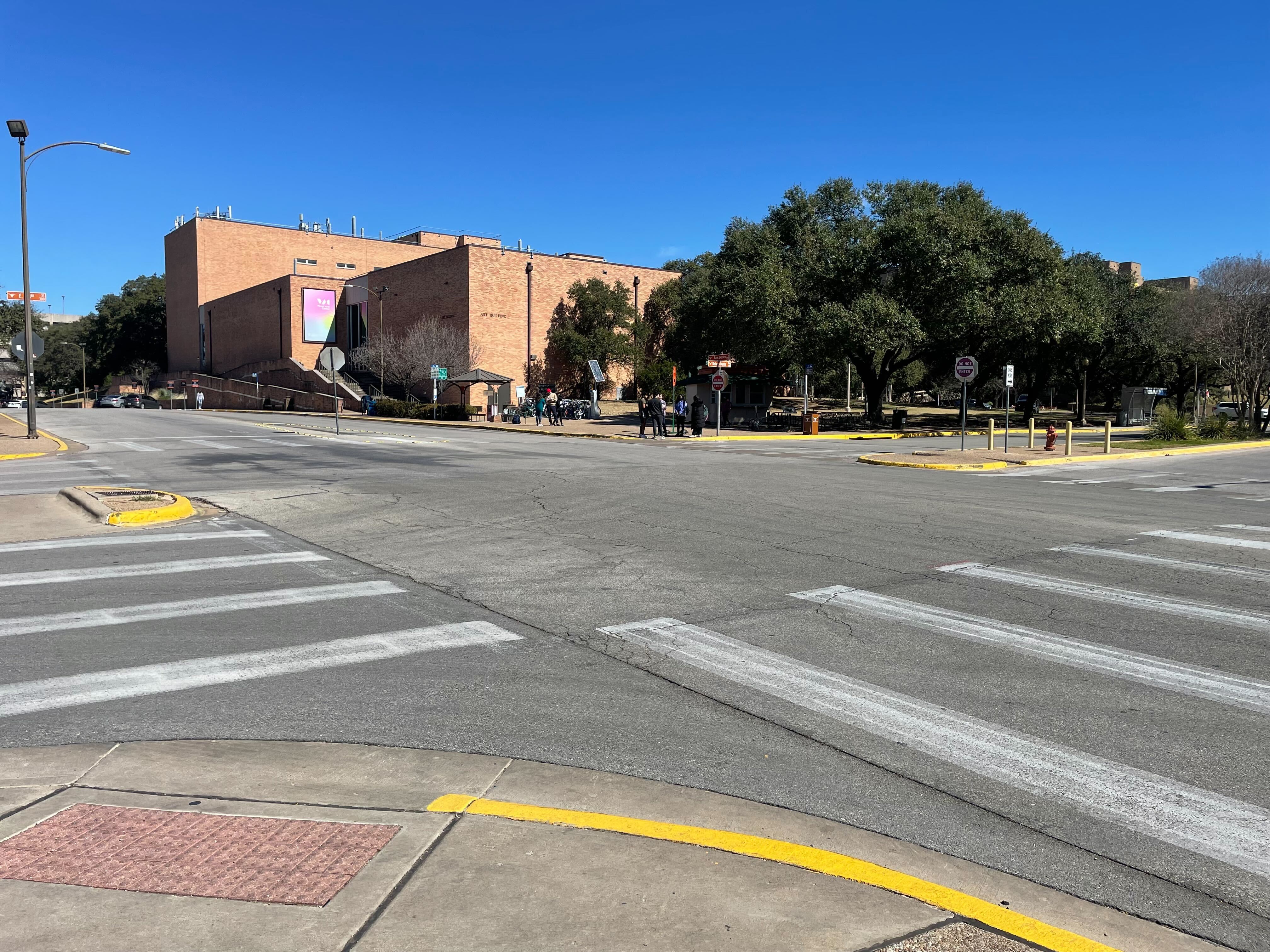Goal: Design and prototype a concept that would improve the San Jacinto & DeLoss Dodds intersection
Timeline
Team
My Contributions
Tags
February - March 2022
Stephanie C. Cyrill
Roya Khosravi
Ian Pugh
Contextual Interviewing
Ideation
Storyboard Creation
Project Management
Design Thinking
Interviewing
Overview
The DeLoss Dodds and San Jacinto intersection on UT's campus sees its fair share use: students crossing to go to classes, cars zooming by to get to drop off locations or the stadium, buses picking up students, cyclists, skateboarders, and people riding scooters. To say the least, the intersection is busy. However, despite its busyness, there is a lack of resources that would bring order to the scene, like traffic lights. Because of this, the purpose of this project was to come up with a solution that would improve this intersection for those using it.
Observations & Pain Points
We decided to focus on cyclists since they were the least protected group
Top Cyclist Pain Points:
- No proper bike lanes
- Unsafe stopping points
- "First thing I notice is that there are lots of variables I have to look at [like cars, pedestrians, and trucks]."
- Busy intersection
Proposal: Elevated Bike Lane
But, would this work?
Though this was an exciting idea, our team was unsure about its feasibility since it was not something we had seen before. Therefore, we researched places where something even close to this idea existed, and in our research, we found similar bridge implementations in various locations, including the Netherlands, China, and even Austin!
In light of our findings, we moved onto implementing what an elevated bridge would look like at this intersection.
We imagined what a cyclist interacting with the elevated bike lane would look like and created the following storyboard:
1. Cyclist needs to turn left
2. A car zooms past the cyclist
3. Pedestrians and cars are racing across the intersection
4. Cyclist considers what might happen if he went
5. The cyclist goes up the elevated bike lane
6. Overview shot shows the elevated bike lane
7. Cyclist is able to cross the intersection safely
This could work, but how would it look?
Based on this model and subsequent interviews with cyclists on the elevated bike lane, we learned that while cyclists thought that it would be a good implementation, they worried about logistics of the bridge, like the steepness of the incline, accessibility, and how it would ensure cyclists to follow traffic laws.
Learnings
As we concluded the project, some takeaways we learned were:
- Need to include guardrails
- Cyclists do not enjoy steep inclines
- Scooters need to be factored in
- Most cyclists do not follow traffic laws
- Active commuter lane for cyclists
- Cyclists most prefer dedicated bike lanes
- Pedestrians seem more excited than cyclists
- Increasing focus on visual elements



.jpg)


.jpg)